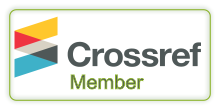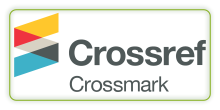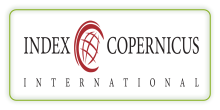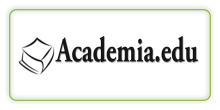IN- VITRO ANTIBACTERIAL ACTIVITY OF SPILANTHES ACMELLA (AKARKARA) EXTRACT ON PORPHYROMONAS GINGIVALIS AND AGGREGATIBACTOR ACTINOMYCETEMCOMITANS
DOI:
https://doi.org/10.29121/jahim.v4.i1.2024.45Keywords:
Spilanthes Acmella, Porphyromonas Gingivalis, Aggregatibactor Actinomycetemcomitans, Minimal Inhibitory Concentration, Time Kill AssayAbstract [English]
Periodontal diseases are caused by certain bacteria found in the bacterial plaque. Usage of plant-derived antimicrobial agents could serve as an effective alternative treatment against periodontal infections due to continuous rise seen in antibiotic resistance. Spilanthes acmella (S. acmella), a vital medicinal plant has been used for its various properties such as anti- inflammatory, antibacterial, antifungal, antinociceptive, anti-cancerous and hastening wound healing. This study was conducted to assess its antibacterial efficacy against common periodontal pathogens.
Objective: The present study was conducted to assess the antibacterial activity of S. acmella plant extract against Porphyromonas gingivalis (Pg), and Aggregatibactor actinomycetemcomitans (Aa) and determine the presence of various phytochemicals in it.
Materials and Methodology: An extract was prepared using dried S. acmella plant powder and mixed with methanol in 1:1 (w/v) ratio. Determination of minimal inhibitory concentration (MIC) was done by using tube dilution technique and time- kill assay was performed against Pg and Aa. Presence of phytochemicals was checked by thin layer chromatography (TLC) method.
Results: MIC of S. acmella was found to be 40 μg/ml for Pg and 20 μg/ml for Aa within 2 h interval. Various phytochemicals were found in S. acmella extract which may be responsible for its anti- bacterial property.
Conclusion: S. acmella extract shows a significant antibacterial effect against the major periodontal pathogens and hence may be a potential natural alternative for controlling the growth of these bacteria.
References
Abdul Rahim, R., Jayusman, P.A., Muhammad, N., Mohamed, N., Lim, V., Ahmad, N.H., Mohamad, S., Abdul Hamid, Z.A., Ahmad, F., Mokhtar, N., &Shuid, A.N. (2021, Mar 29). Potential Antioxidant and Anti-Inflammatory Effects of Spilanthes Acmella and Its Health Beneficial Effects: A Review. International Journal of Environmental Research and Public Health, 18(7), 3532. https://doi.org/10.3390/ijerph18073532
Ahmed, S., Rahman, A., Muslim, T., Sohrab, M.H., Akbor, M.A., Siraj, S., Sultana, N., & Al-Mansur, M.A. (2012). Antimicrobial Cytotoxicity and Phytochemical Activities of Spilanthes Acmella. Bangladesh Journal of Scientific and Industrial Research, 47(4),437-40. https://doi.org/10.3329/bjsir.v47i4.14073
Appiah, T., Boakye, Y. D., & Agyare, C. (2017). Antimicrobial Activities and Time-Kill Kinetics of Extracts of Selected Ghanaian Mushrooms. Evidence-Based Complementary and Alternative Medicine, 15. https://doi.org/10.1155/2017/4534350
Chaiya, A., Saraya, S., Chuakul, W., & Temsiririrkkul, R. (2013). Screening for Dental Caries: Preventive Activities of Medicinal Plants against Streptococcus Mutans. Mahidol University Journal of Pharmaceutical Sciences, 40(1), 9-17.
Charu, F., Tannukit, S., Rotpenpian, N., & Jitpukdeebodintra, S. (2022, May 1). Cytotoxicity and Cell Migration Effect of Crude Spilanthes Acmella Ethanolic and Water Extract. Journal of International Dental and Medical Research, 15(2, 544-51.
Krishnaswami, N.R., Prasanna, S., Seahadri, T.R., & Vedantham, T.N.C. (1975). α and β- Amyrin Esters and Sitosterol Glucoside from Spilanthes Acmella Phytochemistry, 14, 1666-7. https://doi.org/10.1016/0031-9422(75)85386-6
Mian, S.S., Upadhayay, S., & Tajuddin, S.N. (2019, Jan 1). Physicochemical Analysis of Ginger (Zingiber officinale Rosc.) Rhizome Along with its TLC, HPLC and HPTLC Profile. Pharmaceutical Methods, 10(1). https://doi.org/10.5530/phm.2019.1.6
Mombelli, A. (2018). Microbial Colonization of the Periodontal Pocket and Its Significance for Periodontal Therapy. Periodontology 2000, 76, 85-96. https://doi.org/10.1111/prd.12147
Mukharya, D.K.K., & Ansari, A.H. (1986). Olean-12-en-3-O-ß D-Galactopyranosyl (1-4)-O-a-l- rhamnopyranoside: A New Triteropenoidal Saponin from the Roots of Spilanthes Acmella (Murr). Indian J Chem, 26, 81-7.
Müller-Heupt, L.K., Vierengel, N., Groß, J., Opatz, T., Deschner, J., & Von Loewenich, F.D. (2022, Jan 31). Antimicrobial Activity of Eucalyptus Globulus, Azadirachta Indica, Glycyrrhiza Glabra, Rheum Palmatum Extracts and Rhein Against Porphyromonas Gingivalis. Antibiotics, 11(2), 186. https://doi.org/10.3390/antibiotics11020186
Nakatani, N., & Nagashiwa, M. (1992). Pungent Alkamides from Spilanthes Acmella Biosci Biotechnol Biochem, 56, 759-62. https://doi.org/10.1271/bbb.56.759
Newman, M.G., Takei, H., Kokkevold, P.R., & Carranza, F.A. (2006). Clinical Periodontology 10th edition. St. Louis: Saunders-Elsevier, 139-141. https://www.amazon.in/Carranzas-Clinical-Periodontology-dition-Continually/dp/1416023992
Patra, J.K., Kim, E.S., Oh, K., Kim, H.J., Dhakal, R., Kim, Y., & Baek, K.H. (2015, Apr 8). Bactericidal Effect of Extracts and Metabolites of Robinia Pseudoacacia L. on Streptococcus Mutans and Porphyromonas Gingivalis Causing Dental Plaque and Periodontal Inflammatory Diseases. Molecules, 20(4), 6128-39. https://doi.org/10.3390/molecules20046128
Paulraj, J., Govindarajan, R., & Palpu, P. (2013 Dec 26). The Genus Spilanthes Ethnopharmacology, Phytochemistry, and Pharmacological Properties: A Review. Advances in Pharmacological Sciences. https://doi.org/10.1155/2013/510298
Prachayasittikul, S., Suphapong, S., Worachartcheewan, A., Lawung, R., Ruchirawat, S., Prachayasittikul, V. (2009, Feb 19). Bioactive Metabolites from Spilanthes Acmella Murr. Molecules, 14(2), 850-67. https://doi.org/10.3390/molecules14020850
Prachayasittikul, V., Prachayasittikul, S., Ruchirawat, S., & Prachayasittikul, V. (2013). High Therapeutic Potential of Spilanthes Acmella: A Review. EXCLI Journal,12, 291-312. https://pubmed.ncbi.nlm.nih.gov/27092032/
Praveen, N.C., Rajesh, A., Madan, M., Chaurasia, V.R., Hiremath, N.V., & Sharma, A.M. (2014 Sep). In Vitro Evaluation of Antibacterial Efficacy of Pineapple Extract (Bromelain) on Periodontal Pathogens. Journal of International Oral Health: JIOH, 6(5), 96-98.
Ramsewak, R.S., Erickson, A.J., & Nair, M.G. (1999). Bioactive N-Isobutylamides from the Flower Buds of Spilanthes Acmella. Phytochemistry, 51, 729-732. https://doi.org/10.1016/S0031-9422(99)00101-6
Rao, T.M., Rao, B.G., & Rao, Y.V. (2012). Antioxidant Activity of Spilanthes Acmella Extracts. Int J Phytopharm, 3(2), 216-0. https://doi.org/10.1016/S2222-1808(12)60153-4
Sathyaprasad, S., Jose, B.K., & Chandra, H.S. (2015, Sep 1). Antimicrobial and Antifungal Efficacy of Spilanthes Acmella as an Intracanal Medicament in Comparison to Calcium Hydroxide: An in Vitro Study. Indian Journal of Dental Research, 26(5), 528. https://doi.org/10.4103/0970-9290.172081
Shobana, G. (2018). Anti-Bacterial Efficacy of Spilanthes Acmella on Salivary Mutans Streptococci in 15-17 Years Old School Students in Madurai District: A Randomized Controlled Trial (Doctoral Dissertation, Best Dental Science College, Madurai).
Socransky, S.S., & Haffajee, A.D. (2002, Jan). Dental Biofilms: Difficult Therapeutic Targets. Periodontology 2000, 28(1), 12-55. https://doi.org/10.1034/j.1600-0757.2002.280102.x
Verma, K., Dhruvakumar, D., & Pande, M. (2022, May). A Clinical and Microbiological Study to Assess the Efficacy of Acmella Oleracea and Acacia Catechu Herbs as Local Drug Delivery in Treatment of Chronic Generalized Periodontitis Patients. Journal of Indian Society of Periodontology, 26(3), 254. https://doi.org/10.4103/jisp.jisp_264_21
Vlachojannis, C., Chrubasik-Hausmann, S., Hellwig, E., Vach, K., & Al-Ahmad, A. (2018). Activity of Preparations from Spilanthes Oleracea, Propolis, Nigella Sativa, and Black Garlic on Different Microorganisms Involved in Oral Diseases and on Total Human Salivary Bacteria: A Pilot Study. Phytotherapy Research, 32(10), 1992-2001. https://doi.org/10.1002/ptr.6129
World Health Organization (2011). Quality Control Methods for Herbal Materials. World Health Organization.
Yasuda, I., Takeya, K., & Itokawa, H. (1980, Jul 25). The Geometric Structure of Spilanthol. Chemical and Pharmaceutical Bulletin, 28(7), 2251-3. https://doi.org/10.1248/cpb.28.2251






























